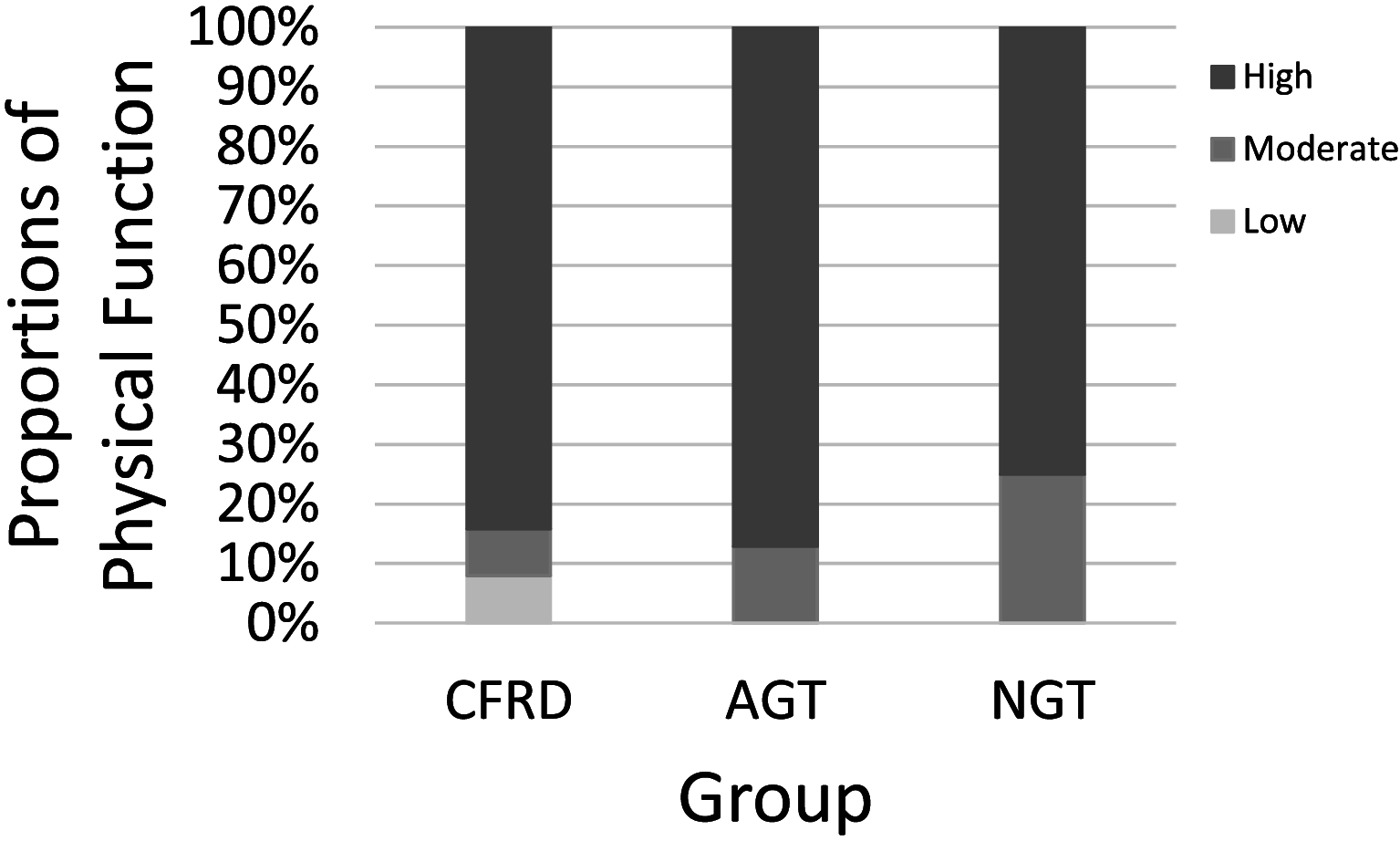Clinical Observations in Patients With Cystic Fibrosis-Related Diabetes and Self-Reported Ototoxicity Symptoms
- PMID: 38016170
- PMCID: PMC11001426
- DOI: 10.1044/2023_AJA-22-00237
Clinical Observations in Patients With Cystic Fibrosis-Related Diabetes and Self-Reported Ototoxicity Symptoms
Abstract
Purpose: Persons with cystic fibrosis (PwCF) are at high risk for ototoxicity due to the routine use of intravenous aminoglycoside (IV-AG) antibiotics in respiratory infection management. Additionally, factors that contribute to ototoxicity-related symptom development and severity in PwCF are unknown. Given the increased risk of ototoxicity in people with diabetes, we explored the association between cystic fibrosis-related diabetes (CFRD) and self-reported ototoxicity symptoms (tinnitus and vestibular problems) in PwCF treated with aminoglycosides.
Method: PwCF (N = 39; 25 females, 14 males; Mage = 30.1 years, SD = 10.3) were recruited from the Cystic Fibrosis Care Center at Oregon Health & Science University. Patients completed the validated questionnaires to ascertain their experiences with ototoxicity-related symptoms of tinnitus and balance function. The diagnosis of CFRD, including oral glucose tolerance testing (OGTT), insulin treatment, hemoglobin A1c, and cumulative IV-AG treatment history, was obtained through a medical chart review. Participants were classified into three groups based on their medical diagnoses via OGTT: normal glucose tolerance (NGT; control; n = 16), abnormal glucose tolerance (AGT; n = 9), and CFRD (n = 14). Participants in each group were further classified based on survey outcomes for ototoxicity-related symptoms.
Results: There was a trend toward a higher proportion of patients with CFRD reporting tinnitus compared to the AGT and NGT groups, but did not meet statistical significance (X2 = 2.24, p = .13). Approximately, 43% of patients with CFRD reported experiencing clinically significant tinnitus lasting > 3 min compared to 11% in the AGT group and 13% in the NGT group (X2 = 3.751, p = .05). Cumulative IV-AG exposure tended to be higher in CFRD compared to other groups. High balance function was generally reported in all groups.
Conclusions: Patients with CFRD have greater ototoxicity-related symptoms. Further investigation of the relationship between CF-related comorbidities and the risk of developing ototoxicity-related symptoms is warranted to improve the detection and management of ototoxicity in PwCF.
Figures




Similar articles
-
Oral glucose tolerance test and continuous glucose monitoring to assess diabetes development in cystic fibrosis patients.Endocrinol Diabetes Nutr (Engl Ed). 2018 Jan;65(1):45-51. doi: 10.1016/j.endinu.2017.08.008. Epub 2017 Nov 12. Endocrinol Diabetes Nutr (Engl Ed). 2018. PMID: 29137964 Clinical Trial. English, Spanish.
-
Relationship between exercise capacity and glucose tolerance in cystic fibrosis.Pediatr Pulmonol. 2018 Feb;53(2):154-161. doi: 10.1002/ppul.23906. Epub 2017 Nov 8. Pediatr Pulmonol. 2018. PMID: 29115018
-
Continuous glucose monitoring and advanced glycation endproducts for prediction of clinical outcomes and development of cystic fibrosis-related diabetes in adults with CF.Front Endocrinol (Lausanne). 2024 Feb 6;15:1293709. doi: 10.3389/fendo.2024.1293709. eCollection 2024. Front Endocrinol (Lausanne). 2024. PMID: 38379863 Free PMC article.
-
Drug treatments for managing cystic fibrosis-related diabetes.Cochrane Database Syst Rev. 2020 Oct 19;10(10):CD004730. doi: 10.1002/14651858.CD004730.pub5. Cochrane Database Syst Rev. 2020. PMID: 33075159 Free PMC article.
-
Cystic fibrosis related diabetes (CFRD)--the end stage of progressive insulin deficiency.Pediatr Pulmonol. 2011 Aug;46(8):747-60. doi: 10.1002/ppul.21495. Epub 2011 May 27. Pediatr Pulmonol. 2011. PMID: 21626717 Review.
References
-
- Blankenship, C., Hunter, L., Feeney, M., Cox, M., Bittinger, L., Garinis, A. C., Lin, L., McPhail, G., & Clancy, J. P. (2021). Functional impacts of aminoglycoside treatment on speech perception and extended high-frequency hearing loss in a pediatric cystic fibrosis cohort. American Journal of Audiology, 30(3S), 834–853. 10.1044/2020_AJA-20-00059 - DOI - PMC - PubMed
-
- Burgess, J. C., Bridges, N., Banya, W., Gyi, K. M., Hodson, M. E., Bilton, D., & Simmonds, N. J. (2016). HbA1c as a screening tool for cystic fibrosis-related diabetes. Journal of Cystic Fibrosis: Official Journal of the European Cystic Fibrosis Society, 15(2), 251–257. 10.1016/j.jcf.2015.03.013 - DOI - PubMed
Grants and funding
LinkOut - more resources
Full Text Sources
Miscellaneous

